- Home
- Philip Donlay
Seconds to Midnight
Seconds to Midnight Read online
SECONDS
TO
MIDNIGHT
Also by Philip Donlay
The Donovan Nash Novels
Pegasus Down
Aftershock
Deadly Echoes
Zero Separation
Code Black
Category Five
SECONDS
TO
MIDNIGHT
A DONOVAN NASH NOVEL
PHILIP DONLAY
Copyright © 2017 Philip Donlay
All rights reserved. No part of this book may be reproduced in any form or by any electronic or mechanical means, including information storage and retrieval systems, without permission in writing from the publisher, except by a reviewer who may quote brief passages in a review.
This book is a work of fiction. Names, characters, businesses, organizations, places, and incidents either are the products of the author’s imagination or are used fictitiously. Any resemblance to actual events, businesses, locales, or persons living or dead, is entirely coincidental.
ISBN 978-1-60809-228-4
Published in the United States of America by Oceanview Publishing
Longboat Key, Florida
www.oceanviewpub.com
10 9 8 7 6 5 4 3 2 1
PRINTED IN THE UNITED STATES OF AMERICA
To the memory of Gary Shulze
Consummate bookseller and friend
You will be missed
ACKNOWLEDGMENTS
WRITING BOOKS IS for the most part a solitary process, though I’ve grown to respect as well as appreciate the fact that success hinges on dear friends, colleagues, and experts. Without them, I have no doubt that my efforts would be futile, so I want to offer my deepest thanks to those who never fail to keep me pointed in the right direction. To my parents, Cliff and Janet, as well as my brother, Chris, and son, Patrick—thank you. To Scott Erickson, Bo Lewis, Pamela Sue Martin, Kerry Leep, Nancy Gilson, Thomas Brandau, Darcy Eggeman, Tex and Heidi Irwin, Philip Marks Jr., and Brian Bellmont, you’ve all played a bigger part in the completion of this book than you’ll ever know.
I’d also like to thank my agent, Kimberley Cameron, and her team of talented professionals. Then of course there are the people who shed light on a myriad of subjects well beyond my expertise. Dr. Philip Sidell and Dr. D.P. Lyle, thanks for all that you do, both medically and literarily. Victoria Dilliott, Mark Hurwitz, David Ivester, Jeff Frye, Samantha Fischer, and Maddee James, you’re all amazing, and I’m the first to admit that I couldn’t do what I do without your efforts. To Oceanview Publishing, the people who turn my words into books—thank you.
And finally, heartfelt well-wishes go out to all of my brothers and sisters around the world, who, like me, battle Ankylosing Spondylitis and the associated nightmares that come with this fearsome disease. You inspire me each and every day to keep fighting and move forward.
SECONDS
TO
MIDNIGHT
CHAPTER ONE
WHEELING IN THE rarified air at thirty-nine thousand feet, Donovan Nash and his entire four-person crew aboard the Galileo marveled at the spectacular brilliance of the Northern Lights. Sitting next to him in the cockpit was Michael Ross, flying their precise track in the empty airspace miles above Northern Manitoba, less than five hundred miles south of the Arctic Circle. In the eastern sky, the sun was only minutes from rising above the horizon, yet the remnants of the Northern Lights continued to swirl and dance with ethereal green and red tendrils. The largest solar storm ever recorded was in progress, bombarding Earth with massive solar radiation, and those aboard the Galileo, Eco-Watch’s highly modified Gulfstream IV, observed the celestial extravaganza from the front row.
From the right seat, Donovan caught a momentary flash from far away. He squinted into the sun, a narrow sliver peeking above the eastern horizon, and saw nothing. Then it blinked again, a brief point of light in his peripheral vision. He turned to find what looked like a solitary contrail that blended perfectly with the snow-covered ground. Donovan followed the unfurling vapor trail until he found its source. What seconds ago was a glimmer on the horizon, quickly became a Boeing 737 closing in on them at nearly the speed of sound.
“Climb, Michael! Climb!” Donovan yelled.
Without hesitation, Michael pulled hard on the controls and simultaneously pushed up both throttles. They hurtled upward out of thirty-nine thousand feet, and Michael banked the Galileo to the left just as the Boeing flashed beneath them.
The sound of the stick shaker reverberated through the cockpit, warning of an imminent stall. Michael lowered the nose, trying to gain the speed he’d lost avoiding the Boeing. In one violent action, the Gulfstream descended into the Boeing’s wake turbulence. The two horizontal tornadoes that streamed back from the 737’s wingtips enveloped the Galileo, and the powerful vortex flipped the Gulfstream upside down before the inertia just as quickly flung them free. Michael kept the Gulfstream rolling all the way around until they were once again wings level.
Donovan watched the Boeing angle away from them holding a northwest heading. Behind them, in the back of the Galileo, were two scientists using the Gulfstream’s complex sensors and optics array to record as much data about the solar storm as possible. A glance over his shoulder told Donovan that both men were still at their stations.
“Dear God, that was close,” Michael said. “Do you still have him? What in the world is he doing out here?”
“What in hell is that guy doing?” Rick Mathews, the third Eco-Watch pilot, said as he rushed from the cabin into the cockpit. “It happened fast, but that looked like a private 737.”
The severe atmospheric conditions prevented any communication with air traffic control. “They’re descending. Follow him,” Donovan said, his fear tapering off, his adrenaline mixed with anger.
Michael added power and brought the speed of the Gulfstream up to redline. Traveling over five hundred miles per hour, the Galileo closed on the Boeing. “I think it’s best if we come at him from above and behind,” he said. “There’s something really off about all of this. I want to get a good look without him knowing we’re here.”
“I like that plan, Michael,” Donovan said. “Rick, did you get a look at his registration? Do we know what country he’s from?”
“No, all I saw was a 737 with what looked like green and gold stripes.”
Donovan picked up a telephone that served as an intercom to communicate with the two researchers seated in the back. “Dr. Samuels, is everyone still in one piece back there?”
“Captain Nash, what in the hell was that all about?” Dr. Samuels asked. “Is everything okay?”
“Everything’s fine, we had to take evasive action to avoid a midair collision with another airplane.”
“I thought Canadian air traffic control said there would be no traffic for the entire time we were on station?”
“That’s what they told us, which is why we’re following this guy. He’s flying without a working transponder, which is why there was no collision warning. With the sun coming up, I was wondering if you could use some of our optical equipment to help us identify them.”
“Let me see what I can do,” Samuels replied. “Exactly where is he right now?”
Donovan looked up and spotted the 737 just as it vanished into a deck of clouds below them. “He just went into the clouds. I’ll get back to you.”
“I’m going to offset our course a few degrees so we don’t run into this guy if he slows down,” Michael said as he swung the Galileo to the left to parallel the Boeing.
“I know we can’t communicate with the outside world via radio right now,” Donovan said to Rick. “But how far south do we need to be, to get someone via satellite connection?”
�
��On our way north out of Minneapolis last night, we lost all communication about an hour’s flying time south of here,” Rick said. “Though, from what Dr. Samuels was saying about the storm, communication access could continue to fluctuate.”
When the Galileo burst out of the bottom of the cloud deck, all eyes searched the sky for the 737. All that lay below them was the frigid snow-covered ground of Northern Manitoba.
“I’ve got him,” Michael called out, his eyes fixed low and to their left. He immediately throttled back and deployed the speed brakes to get the Galileo lower. “He’s slowed way down and is descending fast. I’m going to make a three-sixty to the left and come in behind him.”
“Are they in trouble?” Rick asked. “Is that smoke coming from somewhere in the rear fuselage?”
“Could be,” Michael said.
Donovan checked to make sure he had the emergency frequency dialed in the backup radio. “If he’s having a problem, the short-range transmissions should work, and we haven’t heard any kind of a distress call.” He dropped his eyes to the flight management display. The closest airport was Churchill, Manitoba, and it lay 140 miles east of them. He looked out and once again located the 737. With Michael’s massive descent and tight turn, they were quickly closing the gap.
The intercom to the back pinged. Donovan brought the phone to his ear without taking his eyes from the Boeing. “Doctor, what do you have?”
“We’ve got the camera array locked on to the Boeing. We have no Internet to gather more information, but from the onboard database I can tell you it’s a Boeing Business Jet, based on a 737-800. We captured the registration. It’s HZ-NCT.”
“That’s a Saudi Arabian aircraft,” Donovan said. “Any owner listed in our database?”
“No,” Dr. Samuels said. “From what we can see, smoke appears to be coming from the very aft part of the fuselage.”
“Got it, thanks,” Donovan said.
“Captain, wait! One of the over wing exits was just opened. There’s smoke pouring out of the fuselage. Oh Jesus, something just fell from the aircraft!”
“Track it!” Donovan could see the increase in smoke from the 737. Michael was coming in high and fast and gaining, but whatever was happening, the Galileo’s optics still gave them the best view.
“We have the coordinates of the object plotted,” Samuels said.
“Any clue what it was?” Donovan asked.
“I don’t know yet; we’ll have to enhance it later. It fell like something solid, but there was also fluttering, like cloth. I hate to speculate, maybe a body? Whatever it is came down in the forest.”
“Lock onto the 737 and keep recording.”
“He’s putting down flaps,” Michael said as the Galileo drew up less than a quarter of a mile behind the stricken Boeing. “Dear God, he’s going to try and put it down.”
“All of these lakes are frozen,” Donovan said as he studied the terrain below, then turned to Michael. “Could he pull this off ?”
“I don’t have a clue how much snow is on top of the ice, but it looks like we’re about to find out,” Michael said. “Give me twenty degrees of flaps. I want to slow down to stay behind him.”
“He just put his landing gear down,” Donovan said. “He’s picked his spot, the lake three miles dead ahead. It looks long enough.”
“This is crazy. No distress call, no nothing,” Michael said.
Donovan found himself holding his breath as the Boeing, still trailing smoke, cleared the tops of the snow-covered trees along the shore. Then, in a blur of billowing snow, everything vanished from his view. Michael swung the Galileo into a left turn as they flew over the top of the Boeing. All Donovan could see was a rising cloud of snow that completely obscured everything but the top of the tail. The second they raced beyond the 737, Michael added power and cranked the Gulfstream around to the right to bring them back around for another look.
The Gs from the steep turn pushed Donovan down into his seat as Michael expertly maneuvered the Galileo only a hundred feet above the trees. As the Gulfstream swung around, Donovan strained to catch sight of the Boeing. It took him a moment to find the jet. The blizzard it had created on landing was still gently floating down onto the 737. As Michael flew back across the Boeing, the 737’s wings rocked as bluish fissures raced out in all directions from the ice cracking beneath them. The Boeing lurched and then bucked sideways as the once solid surface of the lake collapsed and gave way. The entire airplane dropped straight down through the ice and splashed into the lake, geysers of water exploding upwards. As Michael flew closer, Donovan spotted a figure stagger from the smoking cabin through the emergency exit and fall, landing hard on the wing. As the Galileo drew closer, Donovan saw the person stand up and run unsteadily toward the wingtip as the Boeing began sinking, tail first.
As the Gulfstream flew low and raced straight for the sinking Boeing, the person on the wing stopped and looked upward, and Donovan could see it was a woman. Thrown off-balance by the abrupt motion of the metal shifting beneath her feet, she slipped, careened sideways, and then jumped in an effort to clear the open water and make it to the ice.
“Michael, did you see that?” Donovan said as his friend pulled the Galileo into another steep turn to bring them back around. In the turn, Donovan saw the swath that the Boeing had made in the snow, the soft blue coloring from the ice just visible in the morning light. “Did she make it?”
“I see her, she’s in the water.” Michael swiveled his head to keep the sinking Boeing in sight as he flew. He made the turn toward the 737. Only the cockpit of the Boeing was still above the water.
Craning his neck, Donovan spotted the woman. She was clutching the edge of the ice trying to pull herself out of the water.
“I don’t see anyone else in the water,” Michael said as he banked for another low pass. “Are you thinking what I’m thinking?”
“I say we do it.”
Michael’s eyes narrowed as he looked out the window at the lake. “The Boeing cleared a long enough swath of loose snow on the lake to use as a runway. My concern is stopping on the ice.”
“If the reverse thrust isn’t enough, you can edge the landing gear into the snow and slow us down that way,” Donovan said. “The ice will hold. We’re a good thirty thousand pounds lighter.”
“The 737 has underwing engines, and they’re hanging down by the main gear only a couple of feet above the ice. I think that’s why they broke through the ice,” Michael said as he started to slow the Gulfstream. “Our engines are up on the tail far above the ice. My concern is our brakes melting the ice and then freezing. If that happens, we’ll be stuck here. The key is to keep the wheels turning, so I’m not shutting down the engines, or stopping this thing for more than a few seconds. The moment we’re stopped, the airstair goes down, you jump off, and I keep us moving.”
“Rick, take my place.” Donovan threw off his harness. He gave Michael a nod of understanding and slapped his shoulder as he exited the cockpit. His trust in Michael was complete, forged in the cockpits of Eco-Watch jets over the years.
“I’m not wasting any time,” Michael called over his shoulder. “Be ready to go.”
Donovan stopped at the crew closet just behind the cockpit. He pulled out heavy boots, and as he laced them up, he called to Dr. Samuels and Dr. Yates. “Strap in, we’re going to land, and once we land, stay seated. You’ll understand when we get there.”
“We saw everything. She managed to pull herself out of the water, but she collapsed running for the shore,” Dr. Samuels said. “We’ll have blankets ready.”
Donovan threw on his heavy parka and made sure his gloves were in the pocket. He’d already heard Michael lower the landing gear and felt him maneuver the Gulfstream around to land. Ready to go, Donovan moved forward and sat in the jump seat between Michael and Rick.
When the tires kissed the ice, the aircraft began shaking violently from the imperfections in the ice. Instantly, Michael yanked on the reverse thrust handles
and pulled them to maximum. The Galileo shuddered under the onslaught of the reversers and the uneven surface. Donovan was forced to use both hands to brace himself as Michael slowed the Gulfstream down to the speed of a brisk walk. He retracted the flaps and stowed the reversers and spoilers in preparation for a quick departure.
“This is about as close as I dare get us to the hole in the ice,” Michael said. “When you open the door, she’ll be fifty yards directly off the left wing.”
Donovan slipped on his sunglasses to face the harsh morning sunlight, pulled on his gloves, donned his watch cap low on his head, and stood ready. The moment the Galileo lurched to a stop, he lowered the airstair, raced to the bottom, and hit the ground moving. Standing in the doorway, Rick began to raise the airstair so Michael could keep the Gulfstream rolling and the brakes warm.
Donovan’s first breath of cold air was painful enough to bring tears that immediately froze on his cheek. When he exhaled, condensation billowed and clung to his skin. The snow made the going slow, but he followed Michael’s directions and spotted the woman. Above the dull roar from the Galileo’s engines, he could still hear the ominous sound of cracking ice spread out in all directions. He ran faster toward his target.
Once there, Donovan slid to a stop, dropped to one knee, dug his arms into the snow, clutched her body firmly, and lifted. He was surprised when she didn’t budge. He dropped to both knees and rocked her back and forth in order to pry her frozen clothes free from the ice. The instant she was free, Donovan rolled her on her back and gathered her up. He was startled that her eyes were open. For a moment he thought she might be dead. Then she blinked.
“Don’t—”
“Who are you, where were you going?” Donovan asked as he lifted her up off the ice and cradled her in his arms.
“Don’t let anyone know about me,” she said, her voice weak and fading. “They’ll kill us all, even our families. Don’t tell—”

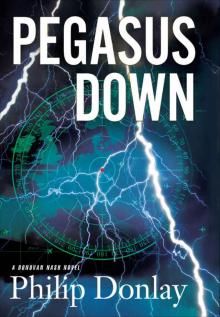 Pegasus Down: A Donovan Nash Thriller (Donovan Nash Thrillers)
Pegasus Down: A Donovan Nash Thriller (Donovan Nash Thrillers)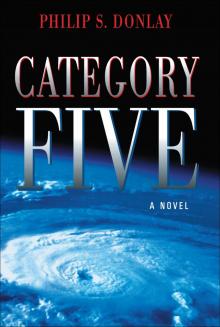 Category Five
Category Five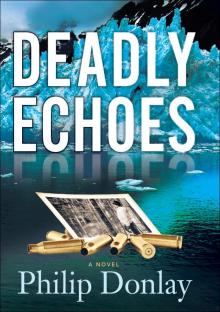 Deadly Echoes
Deadly Echoes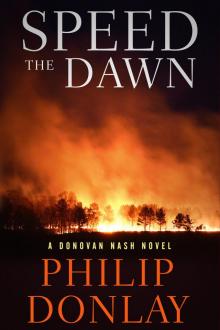 Speed the Dawn
Speed the Dawn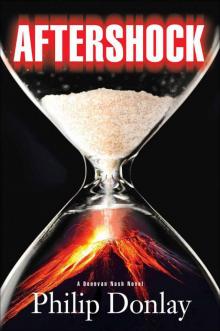 Aftershock: A Donovan Nash Novel (A Donovan Nash Thriller)
Aftershock: A Donovan Nash Novel (A Donovan Nash Thriller) Seconds to Midnight
Seconds to Midnight Zero Separation
Zero Separation